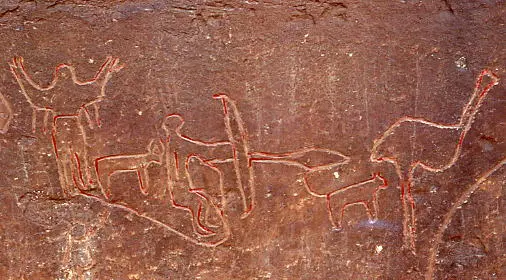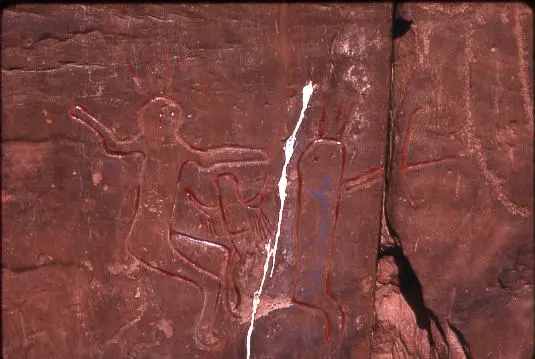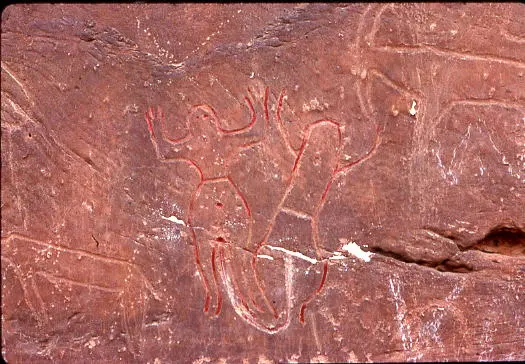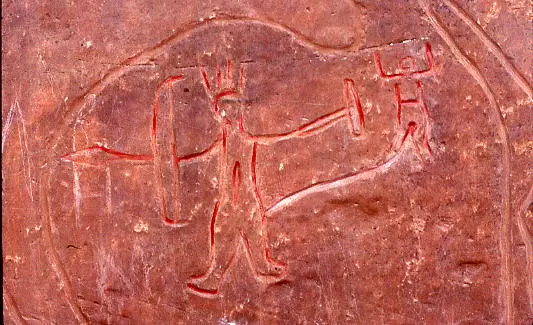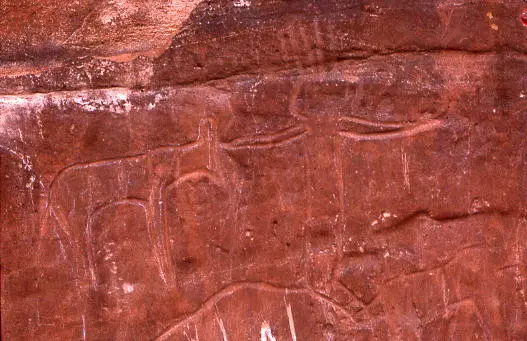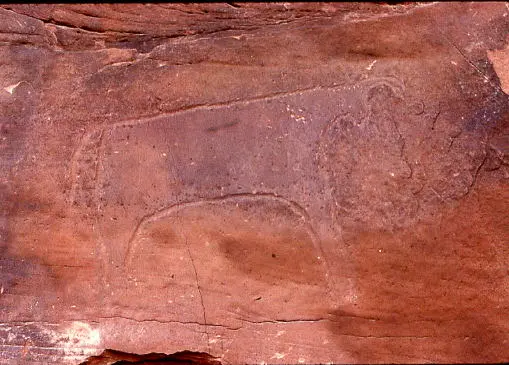The rock engravings of the Aïn Sefra region (Wilaya of Naâma, Algeria) are Neolithic rock engravings from the South Oran region. Along the Saharan Atlas, they follow those to the west, the rock engravings of the Figuig region, and precede, to the east, the rock engravings of the El-Bayadh region, the Aflou region, and then the Tiaret region. Comparable engravings have been described further east, in the Djelfa region south of Algiers, in the Constantine region, and further south in the Taghit region.
History
Less famous than the depictions of Tassili, the engravings of the South Oran region have nevertheless been studied since 1863. The most significant work includes those by Auguste Pomel (from 1893 to 1898), Stéphane Gsell (from 1901 to 1927), Georges-Barthélemy Médéric Flamand (from 1892 to 1921), Leo Frobenius and Hugo Obermaier (in 1925), Abbé Henri Breuil (from 1931 to 1957), Léonce Joleaud (from 1918 to 1938), and Raymond Vaufrey (from 1935 to 1955).
More recent and comprehensive works are known, particularly those by Malika Hachid (numerous field studies, inventories, and publications since 1979), Father François Cominardi (1979), J. Iliou (1980), and Paul Huard and Léone Allard-Huard (1980).
In 1955 and 1964, Henri Lhote spent several months in the South Oran region, allowing him to complete previous research, add hundreds of new descriptions, and publish in 1970 The rock engravings of the South Oran region in the series “Memoirs of the Center for Prehistoric Anthropological and Ethnographic Research” (CRAPE) directed in Algiers by Mouloud Mammeri (Arts et Métiers graphiques, Paris, 210 pages and photographic reproductions). He is mainly interested in the engravings of the El Bayadh region.
The engravings of the Aïn Sefra region include numerous human depictions, interpreted in various ways.
Many have been significantly degraded, particularly by the red paint unfortunately used to highlight their drawings more or less precisely.
The rock engravings of the Aïn Sefra region (Wilaya of Naâma, Algeria) are Neolithic rock engravings from the South Oran region. Along the Saharan Atlas, they follow those to the west, the rock engravings of the Figuig region, and precede, to the east, the rock engravings of the El-Bayadh region, the Aflou region, and then the Tiaret region. Comparable engravings have been described further east, in the Djelfa region south of Algiers, in the Constantine region, and further south in the Taghit region.
History
Less famous than the depictions of Tassili, the engravings of the South Oran region have nevertheless been studied since 1863. The most significant work includes those by Auguste Pomel (from 1893 to 1898), Stéphane Gsell (from 1901 to 1927), Georges-Barthélemy Médéric Flamand (from 1892 to 1921), Leo Frobenius and Hugo Obermaier (in 1925), Abbé Henri Breuil (from 1931 to 1957), Léonce Joleaud (from 1918 to 1938), and Raymond Vaufrey (from 1935 to 1955).
More recent and comprehensive works are known, particularly those by Malika Hachid (numerous field studies, inventories, and publications since 1979), Father François Cominardi (1979), J. Iliou (1980), and Paul Huard and Léone Allard-Huard (1980).
In 1955 and 1964, Henri Lhote spent several months in the South Oran region, allowing him to complete previous research, add hundreds of new descriptions, and publish in 1970 The rock engravings of the South Oran region in the series “Memoirs of the Center for Prehistoric Anthropological and Ethnographic Research” (CRAPE) directed in Algiers by Mouloud Mammeri (Arts et Métiers graphiques, Paris, 210 pages and photographic reproductions). He is mainly interested in the engravings of the El Bayadh region.
The engravings of the Aïn Sefra region include numerous human depictions, interpreted in various ways.
Many have been significantly degraded, particularly by the red paint unfortunately used to highlight their drawings more or less precisely.
